Lambsquarter is the most mentioned moniker of Chenopodium album, a common plant seen in fields and even on roadsides. It belongs to the amaranth family, which is also the family of spinach, beet, quinoa, and chard.
This plant, lambsquarter, is rich in different important nutrients and is also used for preparing traditional medicines.
Other names of this species of the Chenopodium genus include pigweed, fat-hen, bacon weed, goosefoot, Melde, manure weed, goosefoot plant, and wild spinach.
This article will try to cover as much information as possible about this plant, lamb's quarter, including showing you some interesting lambsquarters look alikes.
Table of Contents
Lambsquarters Benefits
Lamb’s Quarters are used for medicinal purposes and poised to have the following health benefits: improvement of eye health, reduces cholesterol, cancer treatment, control sugar level, supports cell growth, osteoporosis, and more.
The vitamin A nutrient in lamb's quarter helps for quicker wound healing and cell development. It also aids cancer treatment due to its rich vitamin C content.
Lamb's quarter can help prevents premenstrual depression, mood swings, hypertension, dizziness, and other situations.
The plant contains manganese, which helps in controlling sugar levels in human blood.
More so, the copper nutrients in lamb's quarter may help reduce "bad" cholesterol (LDL cholesterol) and increase beneficial cholesterol (HDL cholesterol).
3 Lambsquarters Look Alikes
There are pretty many plants that produce similar leaves/flowers just as lamb's quarter.
Here we'd mentioned those plants and point out how you can distinguish between them and lamb's quarter.
That said, below are the plants that looks like lambsquarters:
1. Amaranthus SPP
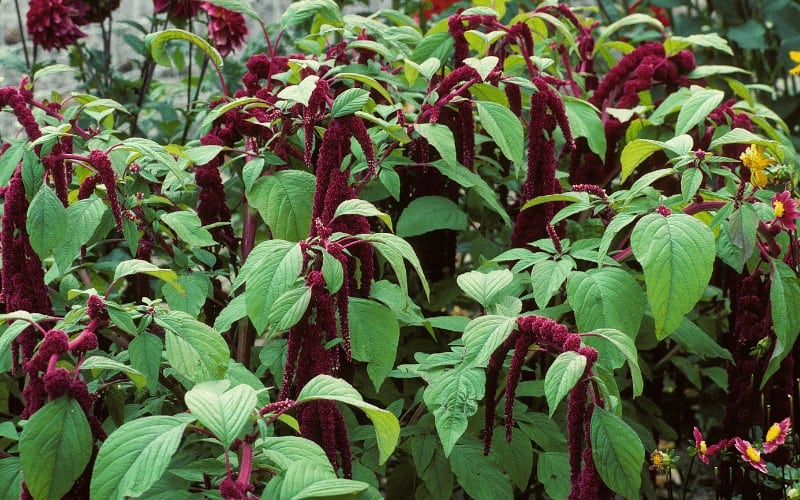
Amaranthus SPP is a species of Amaranth and it looks like lamb quarters when planted. It is edible and planted in many regions or cities across Europe, America, and Africa.
Virtually all parts of this plant are used for medicinal purposes, especially in African communities.
How does Amaranthus SPP distinguish from lambsquarter?
Amaranth SPP has smoother leaf margins, the leaves are diamond- to oval-shaped, and produces spiky flowers atop the plant.
2. Solanum Nigrum (Black Nightshade)
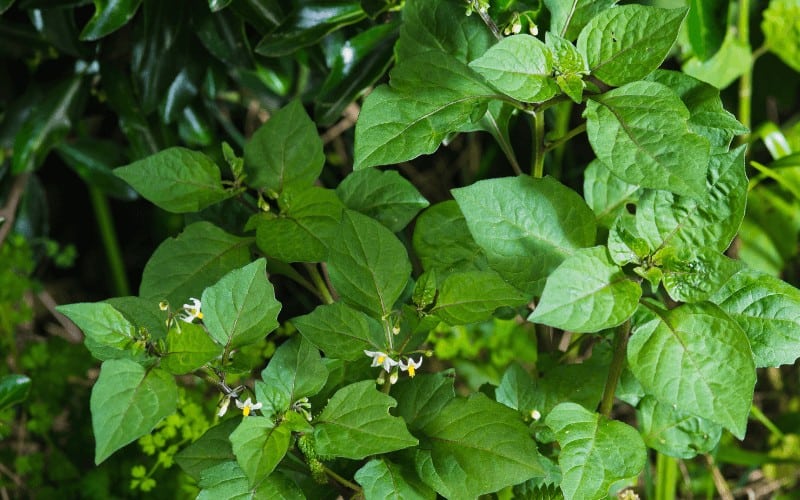
Black Nightshade is categorized as a poisonous plant, it belongs to the genus Solanum, and endemic to Eurasia, Australasia, and South Africa.
This plant is a close lambquarters look alike; experts advise that a few bites of this plant's leave can kill a child and even an adult. Thus, it is advised to stay clear of this plant.
How does Black Nightshade distinguish from lambsquarter?
Black nightshade produces little berry clusters that turn black when fully ripe. Its leaves are egg-shaped with smooth or wavy margins.
However, sometimes, you'd see that the leaves are sparsely toothed, but definitely not as toothed as lambsquarters' leaves.
Also, Black Nightshade's leaf stems are "winged," having tinny leaves running down the stem, with the flowers having 5 petals, and usually whitish or violet.
3. Belladona (Atropa Belladonna)
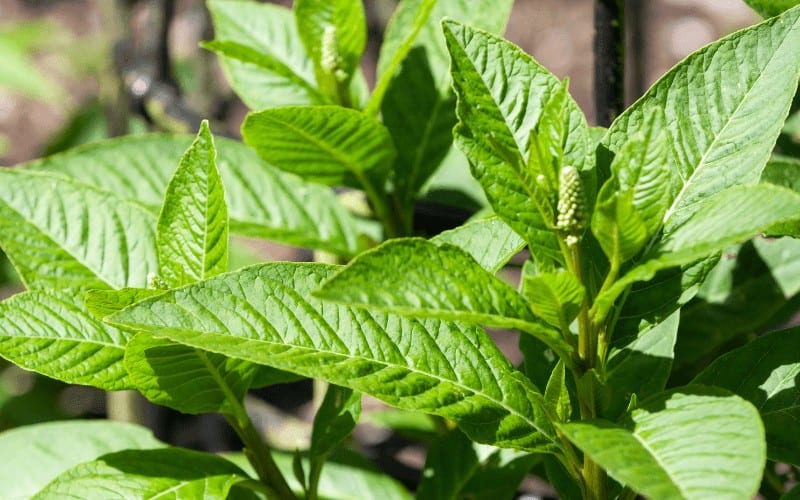
This is another lambsquaters lookalike that is poisonous and categorized to be extremely dangerous to humans.
Though Belladonna doesn't closely look like lamb's quarter, you must have known pretty much about lambsquarter to be able to clearly distinguish between the two.
How does Belladonna distinguish from lambsquarter?
Belladonna looks more like black nightshade than lamb's quarters. Its leaves are never toothed and they are oval-shaped.
Coming to the flower aspect, Belladona flowers grow individually from the axils of upper leaves, usually brown with pink hues, and they are five-petaled.
Belladonna produces singly berries - encircled by a star-shaped calyx - that turn black when fully ripe.
These are the closest lambquarters lookalikes that you may need to watch out for. Asides from Amaranthus SPP, others are categorized as poisonous plants.
How to Identify Lambsquarters
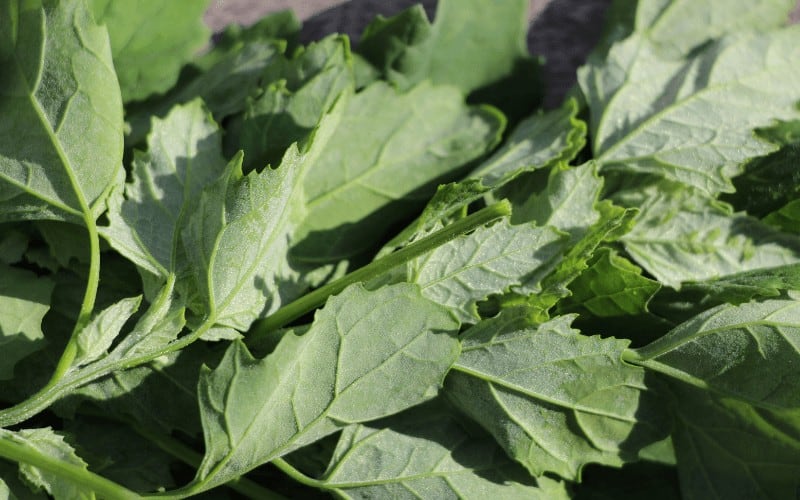
Lambsquarters grow in different environments (usually places with disturbed soil), including roadsides, gardens, fields, trailside, and even on vacant lots. It is important - as a forager - that you're able to clearly identify lambsquarters.
Since the plant contains high oxalic acid, which can interfere with the human's body ability to absorb iron and calcium, here's how to point out lambsquarters.
Lambsquarters Identification
Typically, lambsquaters grow up to 3 feet tall or even higher and may have smooth-margined top leaves with triangular, toothed lower leaves.
In late spring (or late May and early June), lambsquarters produce tender leaves that appear to be triangular- or oval-shaped, covered with whitish coating.
The margins may appear wavy, smooth, or coarsely toothed - when the plant is still growing. However, as lambsquarters mature, the leaves become, triangular- or diamond-shaped, and the margins are coarsely toothed.
A closer look at the bottom of the lambsquarters' leaf and the growth at the top of the plant, you'd see a whitish coating. Also, the stems and stalks are typically tinged with purple.
Lambsquarters start flowering when they’ve reached their maximum height. When lambsquarters grow in an ideal environment, it can reach up to 6-feet, but in other environments, it may grow up to two or three feet tall.
The flower of lambsquarters' is almost unnoticeable; very small, greenish, and circular- or oval-shaped. You'll see the flowers atop the stalk and they grow in clusters.
In fall, the flower heads turn brown and papery, containing some seeds inside. Finally, when the plant is fully mature, you'd be able to see the black, shiny seeds. To see the seed, rub off the chaff.
Pretty enough, this explanation will help you to identify lambsquarters at their various stages from growth to maturity.
Is Lamb's Quarters Poisonous To Humans?
When Lamb's Quarters grow in rich organic soils, they can accumulate toxic levels of nitrate. This is also the case if they are grown in arable croplands and fertilized.
This plant can also accumulate high levels of oxalates and sulfates. All these minerals are not essentially good for the human body, especially when consumed above the required level.
Cooking removes most of these toxic nutrients in lamb's quarter, but for foragers, it is advisable to consume very little amount of this plant. It can be eaten in salads or added to smoothies.
Is Lambsquarters Edible?
Yes, generally, anyone can eat Lamb’s Quarters, either cooked or raw. If you’re eating it cooked, there’s nothing to worry about.
On the contrary, if you’re eating it raw, that’s when you need to be careful about the quantity you consume because lambsquarter contains toxic levels of oxalic acid and saponins.
Also, you will need to rinse off the whitish powdery bloom on the leaves before eating it raw. Apparently, if you like the mineral-rich taste of chard or spinach, you’ll also love eating lambsquarters.
How To Harvest Lambsquarters
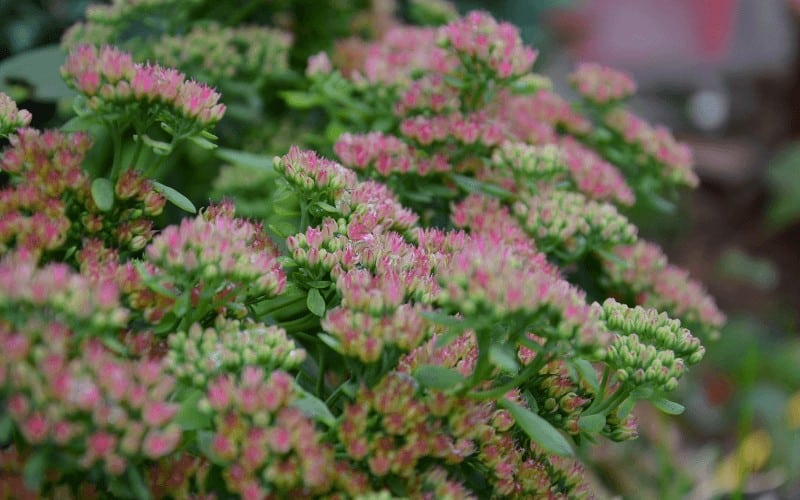
Lamb's quarter seed is very tiny. To harvest this plant, follow the steps below:
First Step: gently pull off the leaves from the stem; you may need to hold the stem with one hand (to keep it firm) while using the other hand to pull the leaves. You have to gentle while pulling the leaves so that they do not tear during the process.
Second Step: If the leaves are looking too difficult to pull from the stem without tearing apart, you can use scissors and cut them from the stem. Cut from a few centimeters above soil level.
Third Step: When you have gathered the leaves, the seeds are there on the leaves, so, you will have to remove the seed heads or bend them into a bowl and shake out the seeds.
That’s how to harvest lambsquarters when fully matured.
Common Lambsquarters
Common Lambsquarters (Chenopodium Album) belongs to the goosefoot family Chenopodiaceae. It is a summer annual plant with two long, linear-shaped cotyledons.
This plant produces opposite, ovate-shaped leaves as its first true leaves. The leaves turn purplish, covered with white, mealy substance.
As the plant matures, the leaves become broad, triangle-shaped with irregularly toothed margins. Mature common lambsquarters grow up to 6-feet in height.
Common Lambsquarters Life Cycle
This plant lasts for a very long time; it remains viable for up to 20 years, depending on its habitat.
However, a study found out that common lambsquarters' seeds deplete up to 50% after 12 years and 99% after 78 years.
Is Lamb's Quarter The Same As Pigweed?
Yes, both Lamb’s Quarter and Pigweed are common names of Chenopodium album, a plant in the amaranth family.
When people mention pigweed or lambsquaters, they are referring to Chenopodium albums; so, they are the same.
Suggested Readings:
- How To Care For Pachysandra Seeds
- How Often To Water Pansies
- PH Meters For Hydroponics
- How To Remove Grass In Vegetable Garden
- How To Kill White Fungus In Palm Trees
Conclusion
Apparently, this article covered the closest lambsquarters look-alikes, as well as explain various useful details you need to know about the Chenopodium album (lamb’s quarters).
In summary, here’s how to identify lambsquarters in a garden or field:
- It has bushy leaves covered with whitish mealy substance that you can easily shake off.
- Slender, upright seed heads
- The seed heads grow from the center
- Foliage bunched together, closer to the ground
Eating Chenopodium album raw requires moderation, but when cooks, all its toxic nutrients die off.




